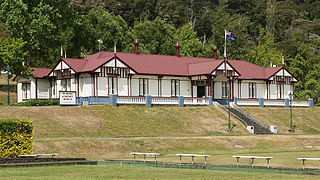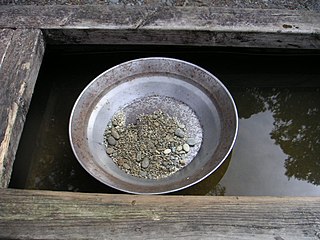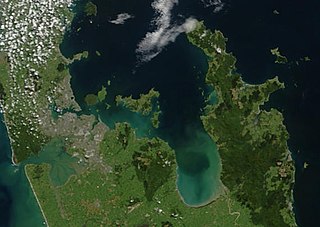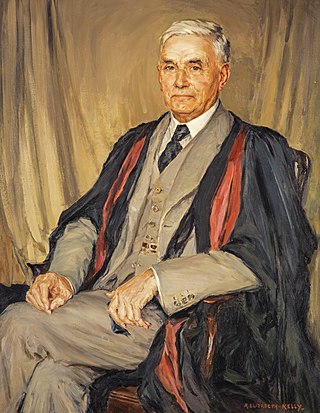
Arrowtown is a historic gold mining town in the Otago region of the South Island of New Zealand. Arrowtown is located on the banks of the Arrow River approximately 7.5 km from State Highway 6. Arrowtown is located 19.5 kilometres to the east of Queenstown. As well as the route via State Highway 6 at Arrow Junction, there is also road access directly to Queenstown via Arthurs Point and a third route via the picturesque Lake Hayes.

Waihi is a town in Hauraki District in the North Island of New Zealand, especially notable for its history as a gold mine town.
Paeroa is a town in the Hauraki District of the Waikato Region in the North Island of New Zealand. Located at the base of the Coromandel Peninsula, it is close to the junction of the Waihou River and Ohinemuri River, and is approximately 20 kilometres south of the Firth of Thames.

Te Aroha is a rural town in the Waikato region of New Zealand with a population of 3,906 people in the 2013 census, an increase of 138 people since 2006. It is 53 km (33 mi) northeast of Hamilton and 50 km (31 mi) south of Thames. It sits at the foot of 952 metres (3,123 ft) Mount Te Aroha, the highest point in the Kaimai Range.
Thames is a town at the southwestern end of the Coromandel Peninsula in New Zealand's North Island. It is located on the Firth of Thames close to the mouth of the Waihou River. The town is the seat of the Thames-Coromandel District Council. The Māori iwi are Ngāti Maru, who are descendants of Marutuahu's son Te Ngako. Ngāti Maru is part of the Ngati Marutuahu confederation of tribes or better known as Hauraki Iwi.

Te Kauwhata is a small town in the north of the Waikato region of New Zealand, situated close to the western shore of Lake Waikare, some 40 km north of Hamilton and approximately 58 km south of Manukau City.

Gold prospecting is the act of searching for new gold deposits. Methods used vary with the type of deposit sought and the resources of the prospector. Although traditionally a commercial activity, in some developed countries placer gold prospecting has also become a popular outdoor recreation. Gold prospecting has been popular since antiquity. From the earliest textual and archaeological references, gold prospecting was a common thread for gaining wealth.

The Historic Kopu Bridge is a single-lane swing bridge that spans the Waihou River, near its emergence into the Firth of Thames in the Thames-Coromandel District of New Zealand's North Island. The bridge was completed in 1928 and was part of State Highway 25. The swinging span in the middle of the bridge is 43 metres long and with an overall length of 463 metres, the bridge was the longest and oldest single lane bridge within the state highway network. It is also New Zealand's only remaining operational swing bridge.

Hikutaia is a locality on the Hauraki Plains of New Zealand. It lies on State Highway 26, south east of Thames and north of Paeroa. The Hikutaia River runs from the Coromandel Range through the area to join the Waihou River.

Matatoki is a locality on the Hauraki Plains of New Zealand. It lies on State Highway 26, south east of Thames and north of Paeroa. The Matatoki Stream runs from the Coromandel Range through the area to join the Waihou River.

Ngāti Maru is a Māori iwi (tribe) of the Hauraki region of New Zealand. The stronghold of Ngāti Maru has been the Thames area. Ngāti Maru are descendants of Te Ngako, also known as Te Ngakohua, the son of Marutūāhu, after whom the tribe is named.

Lyell is the site of a historic gold mining town in the Buller Gorge in the South Island of New Zealand. It lies on State Highway 6, 18 km (11 mi) northeast of Inangahua.
Waiuta is the location of a historic mining town on the West Coast of the South Island of New Zealand. It is now abandoned and considered a ghost town. Located 58 km north of Greymouth and 21 km south of Reefton in Ikamatua, New Zealand, it was the site of a gold mine until 1951 when the collapse of the mine made it uneconomic. A number of buildings remain and there are still residents in what remains of the town. Nowadays Waiuta has become a tourist attraction, with few of the original buildings still intact that include the former police station, three cottages and the old barber shop.

The Thames Branch railway line connected Thames, New Zealand, with Hamilton and was originally part of the East Coast Main Trunk railway. Part of the line between Morrinsville and Waitoa remains open and is in use as the Waitoa Branch line, connecting to the Fonterra Dairy Factory at Waitoa.

James Park was a Scottish-born geologist, director of school of mines, university professor, explorer, and writer, who was active in New Zealand. He was director of the Thames School of Mines for seven years, and went on to become the dean of the mining faculty at the University of Otago for 18 years.

Charters Towers School of Mines is a heritage-listed school of mines at 24 - 26 Hodgkinson Street, Charters Towers City, Charters Towers, Charters Towers Region, Queensland, Australia. It was added to the Queensland Heritage Register on 21 October 1992.

Kauaeranga Valley is a valley created by the Kauaeranga River, which flows from the Coromandel Range southwest to the Firth of Thames at Thames, New Zealand in the North Island. It contains the settlement of Kauaeranga on the Coromandel Peninsula. It is located near Thames, in the Thames-Coromandel District in the Waikato region. It covers a land area of 180.51 km2.
Maratoto is a valley and rural community in the Hauraki District and Waikato region of New Zealand's North Island, north of Paeroa.
Kopuarahi is a rural settlement and farming community in the Hauraki District and Waikato region of New Zealand's North Island.

The School of Mines in Reefton, New Zealand (1887–1970) was one of a number of mining schools set up to teach the science of mining during the 19th century gold rush. Like the Thames School of Mines it is a Heritage New Zealand Category 1 listed historic building.

















